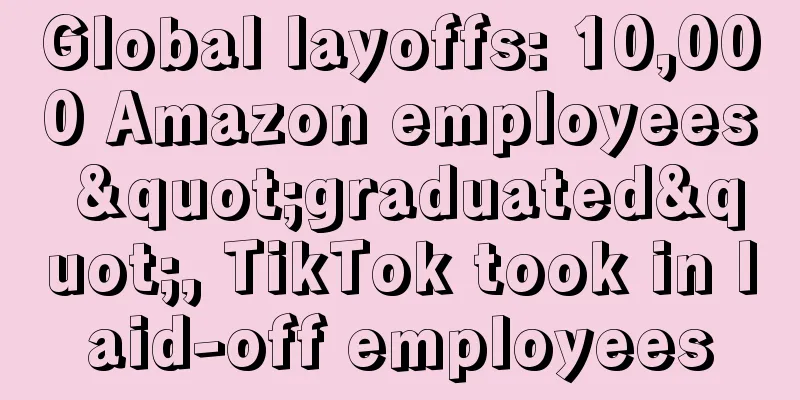Excess inventory drives up costs! Walmart and other retailers follow Amazon’s lead: refunds without returns!

|
It is learned that in the past few months, due to the global logistics crisis, sales have dropped and operating costs have continued to rise. Retailers of all sizes in the United States have reported excess inventory. In order to deal with the excess inventory and make room for hot-selling products during the peak sales season, retail giants such as Walmart are changing their return policies: consumers will receive a refund but do not need to return the goods. In addition to Walmart, other retail giants such as Target, Gap and American Eagle Outfitters are also considering modifying similar return policies. Burt Flickinger, retail sales expert and CEO of Strategic Resource Group Retail Consulting, said: "For retailers, there is excess inventory in every category, from clothing to furniture to oversized toys. Storage costs are rising under the weight of excess inventory, and if returned products are added, it will not only increase inventory costs but also make inventory more chaotic. Implementing a new return policy of refunding but not returning the goods is a wise move for retailers. Because retailers' net profit for $1 of products is 1-5 cents, but for returned products, the processing cost for retailers is between 15-30 cents for every $1 of products returned. Therefore, for small-value products, retailers would rather discount and promote without refund or exchange than increase the return processing costs. Such products mainly include large-capacity appliances, furniture and decorative items such as children's toys, shoes, towels and bedding." According to a survey conducted by the National Retail Federation (NRF) and Appriss Retail, retail returns averaged 16.6% in 2021, with a total of more than $761 billion worth of goods likely to eventually return to stores and warehouses. Walmart said it would take a quarter to get rid of excess inventory. Of course, a policy of refunding without returning the product has its drawbacks. Retailers need to carefully monitor buyers’ purchasing and return patterns to ensure they are not hoarding large quantities of free products. It is learned that Amazon's return policy for many years has been a "return no return" policy. According to Steve Rop, director of operations at goTRG, the company handles more than 100 million returned items each year for companies such as Walmart, Amazon and Lowe's. Editor ✎Estella/ Disclaimer: This article is copyrighted and may not be reproduced without permission. |
<<: What changes are American consumers experiencing in the post-epidemic era?
>>: More porridge than monks! Walmart's online platform is still popular
Recommend
Pinterest's Q1 net loss widened to $209 million, and its stock price fell 8% after the market closed
It is learned that on April 27, the US social pla...
What is Shenzhen Yapeng International? Shenzhen Yapeng International Review
Shenzhen Yapeng International (Shenzhen Yapeng Uni...
Can the blocked account be automatically unblocked? Official notice: Beware of cross-border scams!
The echoes of last week’s related wave are still l...
What is Feedly? Feedly Review
Feedly is an RSS subscription platform and news ag...
There were many abnormalities on the eve of the big sale, and product sales and ratings plummeted!
In July this year, many sellers performed outstand...
What is Beru? Beru Review
Beru is an e-commerce platform jointly launched by...
Looking back at what happened last year, Amazon has never let sellers down!
Time flies by so fast. In the blink of an eye, a y...
What is AUTOMAN Intellectual Property? AUTOMAN Intellectual Property Review
Shenzhen Aotumm Intellectual Property Co., Ltd. (h...
What is Hefubao? Hefubao Review
Hefubao was founded in 2014, focusing on solving t...
Beware! These popular products have patents, sellers should check...
1. ORAL IRRIGATOR Overseas consumers generally att...
What is MakeMytrip? MakeMytrip Review
MakeMyTrip is India's largest OTA (online trav...
What is Leaddyno? Leaddyno Review
Leaddyno is an affiliate tracking software that ta...
What is European Cup Testing Technology Service (Dongguan) Co., Ltd.? European Cup Testing Technology Service (Dongguan) Co., Ltd. Review
CPST Testing Technology Services (Dongguan) Co., L...
Amazon product sales suddenly dropped? Don’t panic, here are the tips for operation!
1. The internal causes are as follows: 1. If you ...
Amazon's flash sale rules have been updated again? The running flash sale can no longer adjust the inventory! Backstage control of LD progress is a thing of the past
Anonymous user My C position This year's flash...









